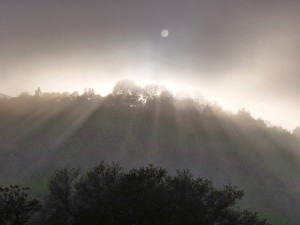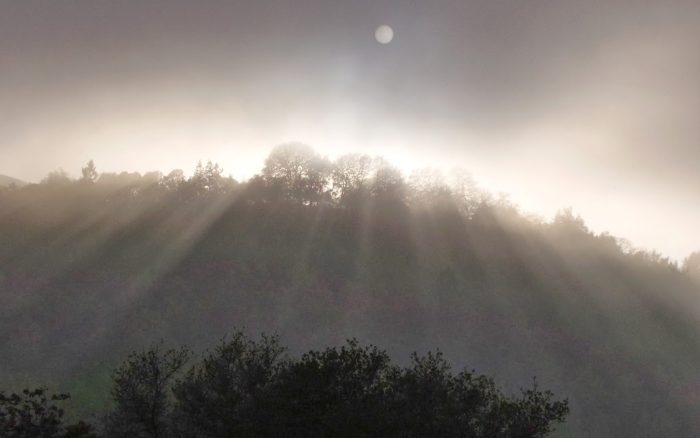 |
| Strong Presence of the Elements |
Spirit Images: Symbolic or Direct Perception?
It was as if the air had been sucked out of the room. Our sense of reality was being questioned! We all sat there, both sides, brought up short by the question. Are the figures we meet in the sweat lodge symbolic, or are they separate (from us) presences? For most of us, until now this question had been a no-brainer: of course, we were in an enlivened dream; the figures, contents of our unconscious.
However, to our leader, a Sioux medicine woman, we were meeting Presences: of the Ancestors, the Animals, the Elements. (She was not a plant person.) In her powerful presence, we could not dismiss her experience of reality, a reality we were beginning to experience ourselves under her tutelage. What exactly was it that whipped the tree tops when she exclaimed The Elements are here! or intensified visions in the excruciating steamed heat of the lodge? For her, Wind or the Stone People were consciousnesses very different from our own, now meeting with us in the lodge. Here we were, two very different orientations, facing that question. And although I had experiences all my life of presences outside of myself, this was the first time I actually heard the reality confronted in any thoughtful way.
Later in a sweat lodge led by this same medicine woman I would have a shocking experience (I write about this more fully in Farming Soul) that necessitated becoming serious about acknowledging and learning to commune with presences in the spirit realm.
That day in our talk about the sweat lodge, we were teetering on the issue that C. G. Jung addressed in his statement about his conversations with an arguably “inner” figure Philemon (in my last blog):
He said I treated thoughts as if I generated them myself, but, according to his views, thoughts were like animals in a forest, or people in a room, or birds in the air. He said, “If you should see people in a room, you would not say that you made those people, or that you were responsible for them.” (1925/1989, 95)
Jung spent most of his life in this realm. The Red Book is filled with such communication. However, his ambivalence about asserting the reality it represented determined what he made public. He wanted to be “scientific,” i.e., accepted. Next blog: what Sioux scholar Vine Deloria, Jr., had to say about this.
